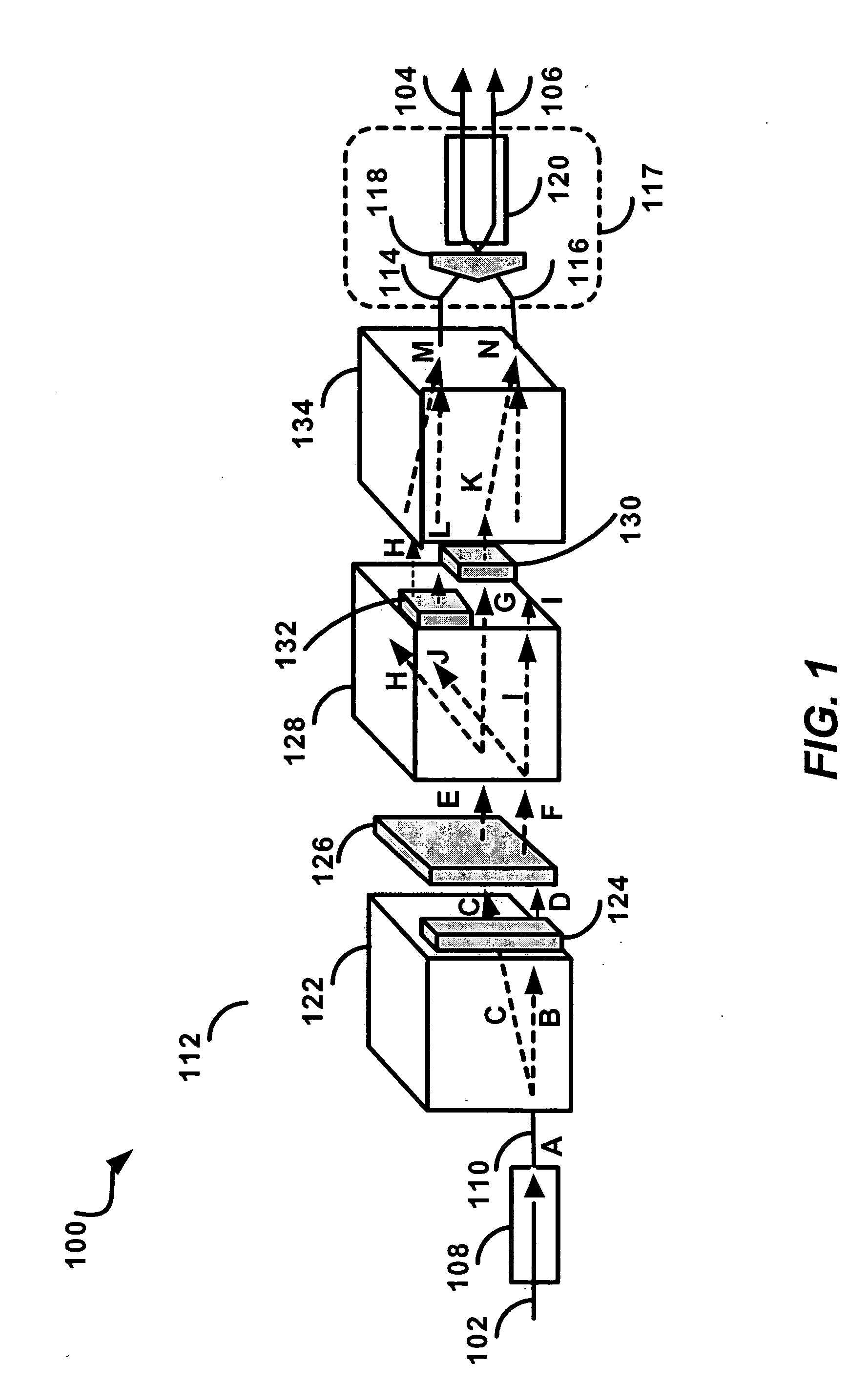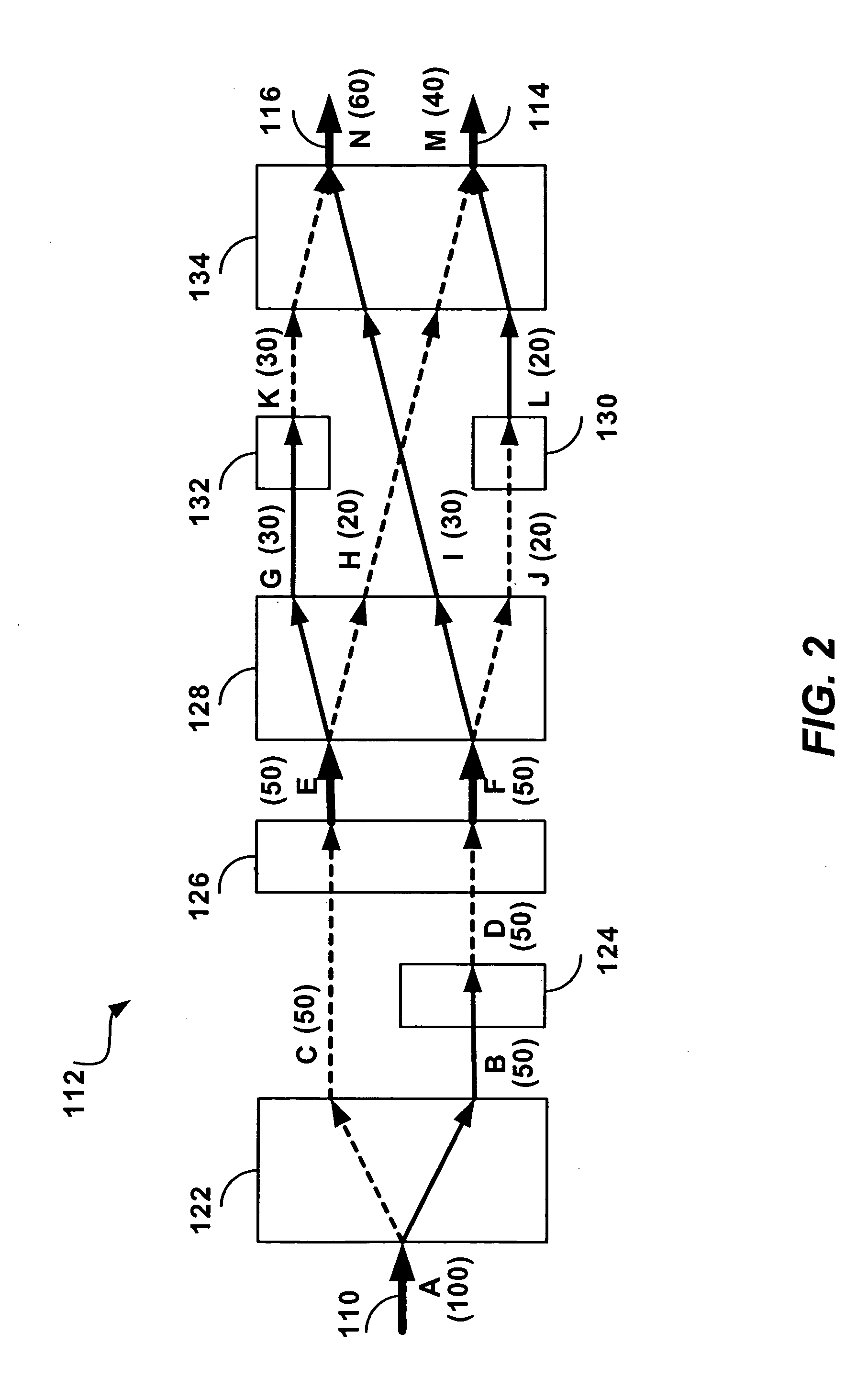Variable polarization independent optical power splitter
a technology of optical power splitter and variable polarization, which is applied in the direction of optical elements, instruments, optical radiation measurement, etc., can solve the problems that the beam splitter described in any of the aforementioned patents is not suitabl
- Summary
- Abstract
- Description
- Claims
- Application Information
AI Technical Summary
Benefits of technology
Problems solved by technology
Method used
Image
Examples
first embodiment 100
First Embodiment 100 of the Invention
FIG. 1 is an illustration of a first embodiment 100 of the invention, showing a 1:2 optical splitter, having an optical input 102 and two optical outputs 104 and 106. The optical input fiber 102 is coupled to a standard collimator 108. The output of the standard collimator 108 is a straight light beam coupled to an input 110 of a first implementation of a variable polarization independent optical power splitter 112. The variable polarization independent optical power splitter 112 has two outputs, 114 and 116, which are coupled through an output unit 117 comprising a roof prism 118 and dual fiber collimator 120, to the optical output fibers 104 and 106 respectively.
The variable polarization independent optical power splitter 112 comprises; a first polarization separator 122 (implemented by a birefringent displacer); a first fixed polarization rotator 124 (implemented by a half-wave plate); a variable polarization rotator 126 (implemented by a...
second embodiment 200
Second Embodiment 200 of the Invention
FIG. 3 is an illustration of a second embodiment 200 of the invention, showing a 1:2 optical splitter. The second embodiment 200 of the invention is similar to the first embodiment 100, comprising many of the same elements, identified by the same reference numbers, incremented by 100.
second embodiment
the invention 200 comprises a second implementation of a variable polarization independent optical power splitter 212 which is similar to the first implementation 112 with the following exceptions: instead of the second polarization separator 128 implemented by a second birefringent displacer (as in the first embodiment of the invention), the second embodiment includes a second polarization separator 228 implemented by a Wollaston prism; and an output unit 217 comprising a dual fiber collimator 220, but no roof prism (118 in the first embodiment) since it is not required.
The three-dimensional diagram of the second embodiment of the invention 200, shown in FIG. 3, is a conceptual and approximate illustration of the spatial disposition of the optical components and light beams. A schematic diagram of the variable polarization independent optical power splitter 212 is shown in FIG. 4, using the same reference labels, and illustrating logically the passage of the light beams through th...
PUM
 Login to View More
Login to View More Abstract
Description
Claims
Application Information
 Login to View More
Login to View More - R&D
- Intellectual Property
- Life Sciences
- Materials
- Tech Scout
- Unparalleled Data Quality
- Higher Quality Content
- 60% Fewer Hallucinations
Browse by: Latest US Patents, China's latest patents, Technical Efficacy Thesaurus, Application Domain, Technology Topic, Popular Technical Reports.
© 2025 PatSnap. All rights reserved.Legal|Privacy policy|Modern Slavery Act Transparency Statement|Sitemap|About US| Contact US: help@patsnap.com



